#20 June 1863
Photo





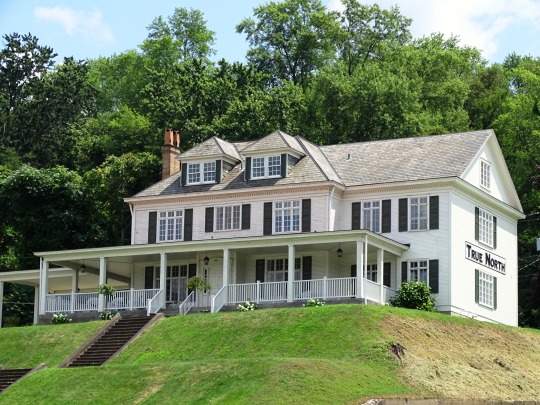



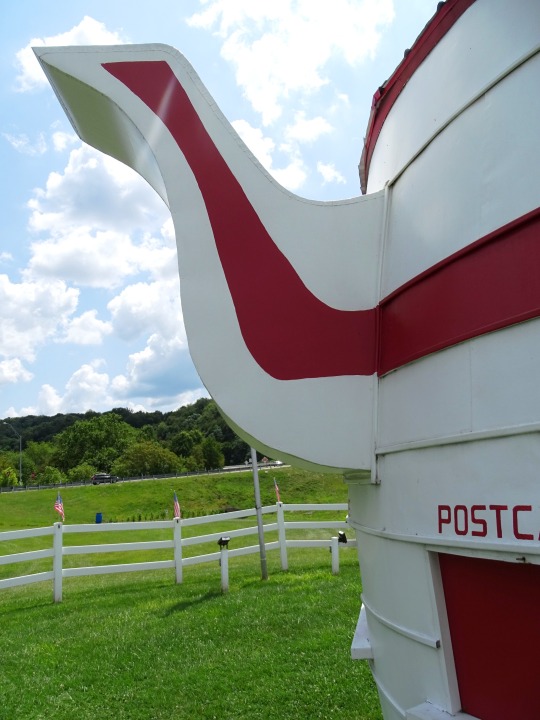
American Civil War: West Virginia was admitted as the 35th U.S. state on June 20, 1863.
#C.A. Smith Mansion#American Civil War#US Civil War#West Virginia#USA#35th US state#20 June 1863#original photography#travel#summer 2019#tourist attraction#roadside atrraction#Appalachian Mountains#Chester#vacation#architecture#World's Largest Teapot#lawn#forest#woods#flora#fence
0 notes
Text
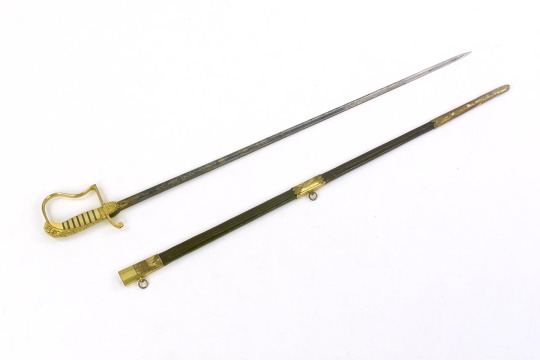
Royal Navy dress sword, which belonged to Captain Sir Thomas Staines (1776-1830) and Admiral Sir Joseph Nias (1793-1879). The outside of the knuckle-guard is engraved with the words 'Captn. Sir Thos. Staines K.C.B., K.F.M, K.O.C.' and on the underside of the quillon with the words 'George Gunning Esqre. to Captn. Joseph Nias R.N. 1832'. The sword was made by Salter, Sword Cutler & Jeweller to H.R.H. the Duke of Sussex, 35 Strand London, 1815-20
More infos here:
The first owner of this sword was Captain Sir Thomas Staines who was born in 1776; and entered the Royal Navy in 1790; he was promoted to the rank of Lieutenant on the 3rd July 1796; to Commander on the 26th July 1802; to Captain on the 22nd January 1806 and he died on the 13th July 1830. Captain Staines was knighted in 1809 and was allowed to accept and wear the insignia of a Knight Commander of the Royal Sicilian Order of St Ferdinand and Merit. In April 1810, several of the principal gentlemen of the Isle of Thanet threw a dinner in honour of him and presented him with a handsome sword. Later Captain Sir Thomas Staines commanded the frigate HMS 'Briton', in the Pacific, when he came unexpectedly upon Pitcairn Island on 17th September 1814, and was the first British man-of-war to discover the descendents of the mutineers of the 'Bounty'. He became a KCB at the reorganisation of the Order in 1815.
Admiral Sir Joseph Nias was born in 1793, he entered the Royal Navy on the 19th November 1807; he was promoted to the rank of Lieutenant on the 26th December 1820; to Commander on the 11th November 1827; to Captain on the 13th July 1835. He became a CB on the 29th June 1841; a Rear-Admiral on the 14th February 1857; a Vice-Admiral on the 12th September 1863; an Admiral on the 18th October 1867; a KCB in 1867 and he died in 1879. Admiral Sir Joseph Nias, KCB served in three expeditions to the Arctic under Ross and Parry (1818-1823). He also served at the Battle of Navarino in 1827 and the First China War between 1840-1842.
#naval weapons#naval artifacts#dress sword#captain staines#captain nias#early 19th century#age of sail
45 notes
·
View notes
Text
The napoleonic marshal‘s children
After seeing @josefavomjaaga’s and @northernmariette’s marshal calendar, I wanted to do a similar thing for all the marshal’s children! So I did! I hope you like it. c:
I listed them in more or less chronological order but categorised them in years (especially because we don‘t know all their birthdays).
At the end of this post you are going to find remarks about some of the marshals because not every child is listed! ^^“
To the question about the sources: I mostly googled it and searched their dates in Wikipedia, ahaha. Nevertheless, I also found this website. However, I would be careful with it. We are talking about history and different sources can have different dates.
I am always open for corrections. Just correct me in the comments if you find or know a trustful source which would show that one or some of the dates are incorrect.
At the end of the day it is harmless fun and research. :)
Pre 1790
François Étienne Kellermann (4 August 1770- 2 June 1835)
Marguerite Cécile Kellermann (15 March 1773 - 12 August 1850)
Ernestine Grouchy (1787–1866)
Mélanie Marie Josèphe de Pérignon (1788 - 1858)
Alphonse Grouchy (1789–1864)
Jean-Baptiste Sophie Pierre de Pérignon (1789- 14 January 1807)
Marie Françoise Germaine de Pérignon (1789 - 15 May 1844)
Angélique Catherine Jourdan (1789 or 1791 - 7 March 1879)
1790 - 1791
Marie-Louise Oudinot (1790–1832)
Marie-Anne Masséna (8 July 1790 - 1794)
Charles Oudinot (1791 - 1863)
Aimee-Clementine Grouchy (1791–1826)
Anne-Francoise Moncey (1791–1842)
1792 - 1793
Bon-Louis Moncey (1792–1817)
Victorine Perrin (1792–1822)
Anne-Charlotte Macdonald (1792–1870)
François Henri de Pérignon (23 February 1793 - 19 October 1841)
Jacques Prosper Masséna (25 June 1793 - 13 May 1821)
1794 - 1795
Victoire Thècle Masséna (28 September 1794 - 18 March 1857)
Adele-Elisabeth Macdonald (1794–1822)
Marguerite-Félécité Desprez (1795-1854); adopted by Sérurier
Nicolette Oudinot (1795–1865)
Charles Perrin (1795–15 March 1827)
1796 - 1997
Emilie Oudinot (1796–1805)
Victor Grouchy (1796–1864)
Napoleon-Victor Perrin (24 October 1796 - 2 December 1853)
Jeanne Madeleine Delphine Jourdan (1797-1839)
1799
François Victor Masséna (2 April 1799 - 16 April 1863)
Joseph François Oscar Bernadotte (4 July 1799 – 8 July 1859)
Auguste Oudinot (1799–1835)
Caroline de Pérignon (1799-1819)
Eugene Perrin (1799–1852)
1800
Nina Jourdan (1800-1833)
Caroline Mortier de Trevise (1800–1842)
1801
Achille Charles Louis Napoléon Murat (21 January 1801 - 15 April 1847)
Louis Napoléon Lannes (30 July 1801 – 19 July 1874)
Elise Oudinot (1801–1882)
1802
Marie Letizia Joséphine Annonciade Murat (26 April 1802 - 12 March 1859)
Alfred-Jean Lannes (11 July 1802 – 20 June 1861)
Napoléon Bessière (2 August 1802 - 21 July 1856)
Paul Davout (1802–1803)
Napoléon Soult (1802–1857)
1803
Marie-Agnès Irma de Pérignon (5 April 1803 - 16 December 1849)
Joseph Napoléon Ney (8 May 1803 – 25 July 1857)
Lucien Charles Joseph Napoléon Murat (16 May 1803 - 10 April 1878)
Jean-Ernest Lannes (20 July 1803 – 24 November 1882)
Alexandrine-Aimee Macdonald (1803–1869)
Sophie Malvina Joséphine Mortier de Trévise ( 1803 - ???)
1804
Napoléon Mortier de Trévise (6 August 1804 - 29 December 1869)
Michel Louis Félix Ney (24 August 1804 – 14 July 1854)
Gustave-Olivier Lannes (4 December 1804 – 25 August 1875)
Joséphine Davout (1804–1805)
Hortense Soult (1804–1862)
Octavie de Pérignon (1804-1847)
1805
Louise Julie Caroline Murat (21 March 1805 - 1 December 1889)
Antoinette Joséphine Davout (1805 – 19 August 1821)
Stephanie-Josephine Perrin (1805–1832)
1806
Josephine-Louise Lannes (4 March 1806 – 8 November 1889)
Eugène Michel Ney (12 July 1806 – 25 October 1845)
Edouard Moriter de Trévise (1806–1815)
Léopold de Pérignon (1806-1862)
1807
Adèle Napoleone Davout (June 1807 – 21 January 1885)
Jeanne-Francoise Moncey (1807–1853)
1808: Stephanie Oudinot (1808-1893)
1809: Napoleon Davout (1809–1810)
1810: Napoleon Alexander Berthier (11 September 1810 – 10 February 1887)
1811
Napoleon Louis Davout (6 January 1811 - 13 June 1853)
Louise-Honorine Suchet (1811 – 1885)
Louise Mortier de Trévise (1811–1831)
1812
Edgar Napoléon Henry Ney (12 April 1812 – 4 October 1882)
Caroline-Joséphine Berthier (22 August 1812 – 1905)
Jules Davout (December 1812 - 1813)
1813: Louis-Napoleon Suchet (23 May 1813- 22 July 1867/77)
1814: Eve-Stéphanie Mortier de Trévise (1814–1831)
1815
Marie Anne Berthier (February 1815 - 23 July 1878)
Adelaide Louise Davout (8 July 1815 – 6 October 1892)
Laurent François or Laurent-Camille Saint-Cyr (I found two almost similar names with the same date so) (30 December 1815 – 30 January 1904)
1816: Louise Marie Oudinot (1816 - 1909)
1817
Caroline Oudinot (1817–1896)
Caroline Soult (1817–1817)
1819: Charles-Joseph Oudinot (1819–1858)
1820: Anne-Marie Suchet (1820 - 27 May 1835)
1822: Henri Oudinot ( 3 February 1822 – 29 July 1891)
1824: Louis Marie Macdonald (11 November 1824 - 6 April 1881.)
1830: Noemie Grouchy (1830–1843)
——————
Children without clear birthdays:
Camille Jourdan (died in 1842)
Sophie Jourdan (died in 1820)
Additional remarks:
- Marshal Berthier died 8.5 months before his last daughter‘s birth.
- Marshal Oudinot had 11 children and the age difference between his first and last child is around 32 years.
- The age difference between marshal Grouchy‘s first and last child is around 43 years.
- Marshal Lefebvre had fourteen children (12 sons, 2 daughters) but I couldn‘t find anything kind of reliable about them so they are not listed above. I am aware that two sons of him were listed in the link above. Nevertheless, I was uncertain to name them in my list because I thought that his last living son died in the Russian campaign while the website writes about the possibility of another son dying in 1817.
- Marshal Augerau had no children.
- Marshal Brune had apparently adopted two daughters whose names are unknown.
- Marshal Pérignon: I couldn‘t find anything about his daughters, Justine, Elisabeth and Adèle, except that they died in infancy.
- Marshal Sérurier had no biological children but adopted Marguerite-Félécité Desprez in 1814.
- Marshal Marmont had no children.
- I found out that marshal Saint-Cyr married his first cousin, lol.
- I didn‘t find anything about marshal Poniatowski having children. Apparently, he wasn‘t married either (thank you, @northernmariette for the correction of this fact! c:)
#Marshal‘s children calendar#literally every napoleonic marshal ahaha#napoleonic era#Napoleonic children#I am not putting all the children‘s names into the tags#Thank you no thank you! :)#YES I posted it without double checking every child so don‘t be surprised when I have to correct some stuff 😭#napoleon's marshals#napoleonic
66 notes
·
View notes
Text


700+ Civil War-Era Gold Coins Found Buried in Kentucky
A man unearthed a huge hoard of Civil War-era gold and silver coins on his Kentucky farm.
A Kentucky man got the surprise of his life while digging in his field earlier this year: a cache of over 700 coins from the American Civil War era.
The "Great Kentucky Hoard" includes hundreds of U.S. gold pieces dating to between 1840 and 1863, in addition to a handful of silver coins. In a short video, the man who discovered the hoard — whose identity and specific location have not been revealed to the public — says, "This is the most insane thing ever: Those are all $1 gold coins, $20 gold coins, $10 gold coins," as he aims his camera at the artifacts tumbling out of the dirt.

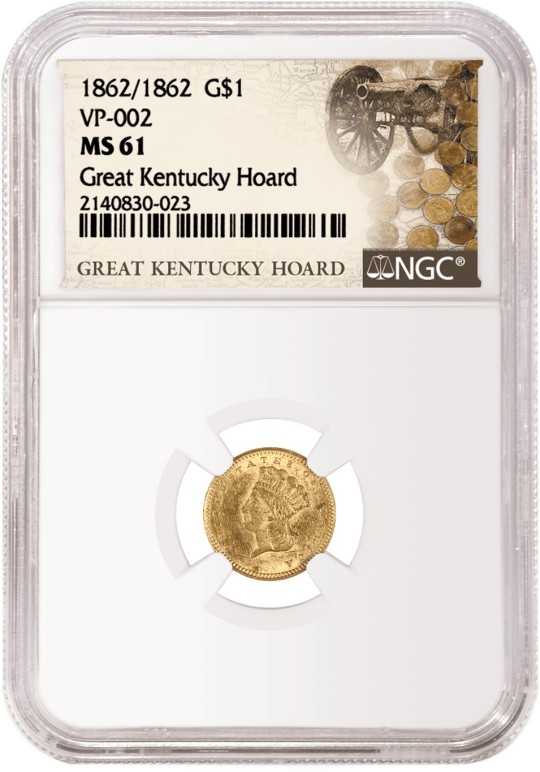
According to the Numismatic Guaranty Co. (NGC), which certified the coins' authenticity, and GovMint, where the coins were sold, 95% of the hoard is composed of gold dollars, along with 20 $10 Liberty coins and eight $20 Liberty coins. The rarest is the 1863-P $20 1-ounce gold Liberty coin. Just one of these coins can go for six figures at auction, and the Great Kentucky Hoard boasts 18 of them. NGC's website notes that the $20 Liberty coin, which circulated from 1850 to 1907, was minted by the Treasury Department after gold was discovered in California. The $20 Liberty coins in the hoard are even rarer because they do not include "In God We Trust," which was added in 1866 after the end of the Civil War.
Potentially more important, though, is what the hoard can tell us about America's history during an extremely tumultuous period.
Ryan McNutt, a conflict archaeologist at Georgia Southern University who has heard about but not seen the hoard, said in an email that "given the time period and the location in Kentucky, which was neutral at the time, it is entirely possible this was buried in advance of Confederate John Hunt Morgan's June to July 1863 raid."
Many wealthy Kentuckians are rumored to have buried huge sums of money to prevent it from being stolen by the Confederacy. James Langstaff left a letter saying he had buried $20,000 in coins on his property in Paducah, William Pettit buried $80,000 worth of gold coins near Lexington, and Confederate soldiers quarantined for measles reportedly stole payroll and hid it in a cave in Cumberland Gap. None of these caches has ever been recovered.

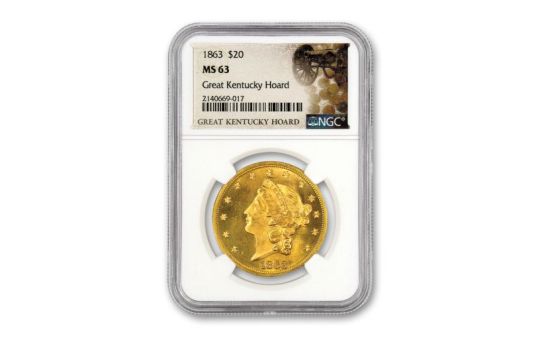
Considering the hoard coins are federal currency, McNutt said, it may be the result of a Kentuckian's dealings with the federal government — "dealings that it would be wise to conceal from a Confederate raiding party." Many Americans affected by the Civil War "became experienced with hiding goods and valuables," he said.
Most concentrations of historical artifacts found on private land end up going to market or being collected without archaeological consultation, according to McNutt. "As a conflict archaeologist, I find this loss of information particularly frustrating," he said. Hoards have an incredible amount of information about the person who collected the objects, offering archaeologists insight into a brief window in time.
Historical finds like these on private land in the U.S. do not need to be reported to an archaeologist. But McNutt, who has developed close relationships with landowners, believes that education and outreach are key to learning more about these rare coin caches.
"It is entirely up to the landowner," McNutt said, but not engaging with an archaeologist means "it's a snapshot of the past, lost forever."
By Kristina Killgrove.
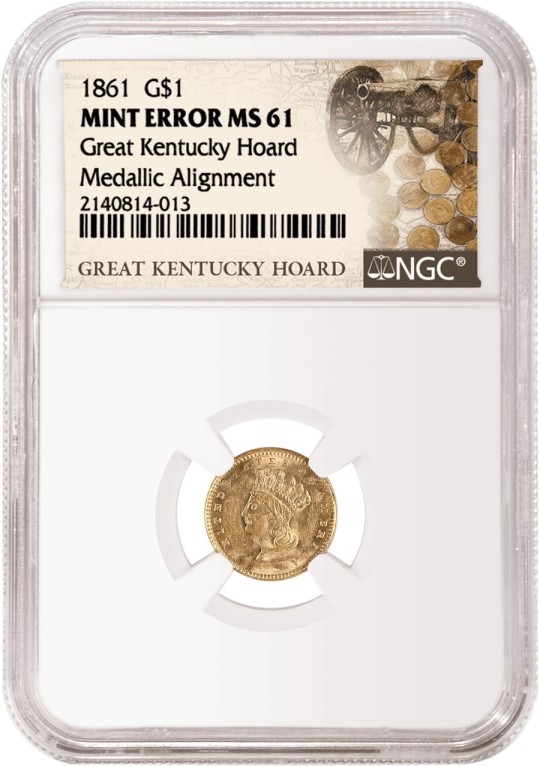
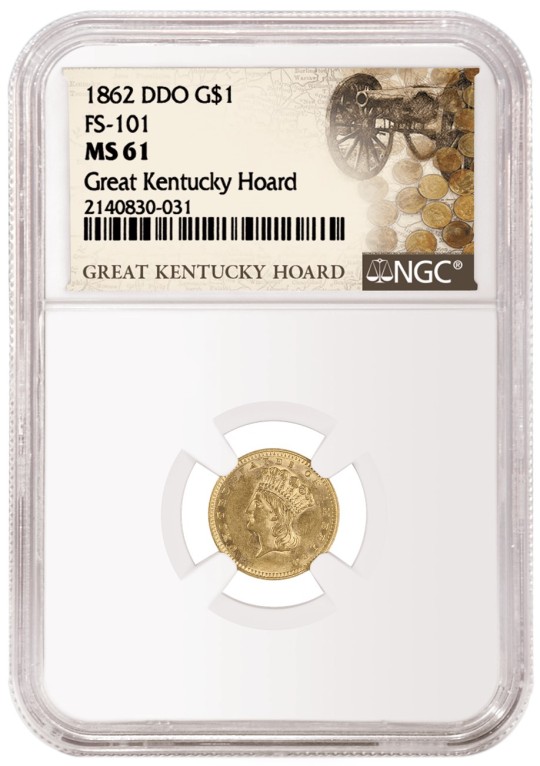


#700+ Civil War-Era Gold Coins Found Buried in Kentucky#The Great Kentucky Hoard#gold#silver#treasure#gold coins#silver coins#collectable coins#rare coins#metal detecting#archeology#archeolgst#history#history news#jackpot#discover#discovered#discovery#lucky#lucky find
48 notes
·
View notes
Text
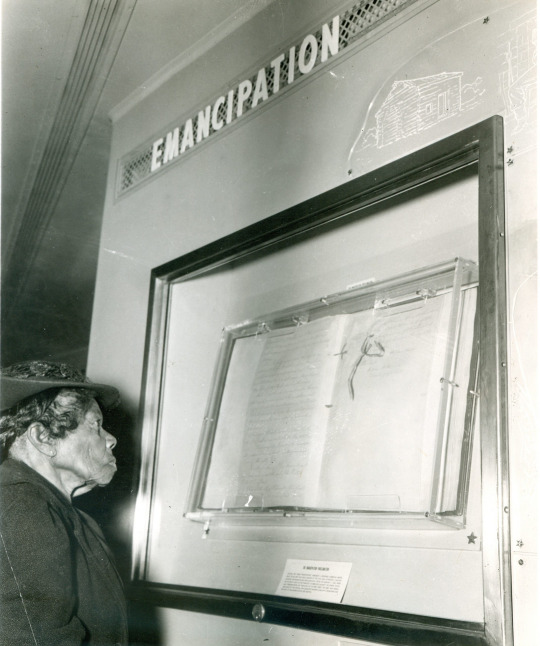
Former slave Sally Fickland views the Emancipation Proclamation on the Freedom Train, 1947.
WE HONOR JUNETEENTH
#OTD 2021, Juneteenth named a federal holiday
By Miriam Kleiman, Public Affairs
On June 19, 1865, 2½ years after the Emancipation Proclamation, Maj. Gen. Gordon Granger issued General Order #3, informing the people of Texas that all enslaved people were now free. Texans were the last Americans to learn this.
Visit the National Archives in DC this weekend (June 18-20) to see General Order #3 and the Emancipation Proclamation! Details here.
This day became known Juneteenth, a combination of June and 19th, aka Freedom Day or Emancipation Day, it’s this country's oldest known celebration commemorating the end of slavery. On June 17, 2021, President Joe Biden signed a bill into law establishing Juneteenth as a federal holiday.

Excerpt from General Order #3:
The people of Texas are informed that, in accordance with a proclamation from the Executive of the United States, all slaves are free. This involves an absolute equality of personal rights and rights of property between former masters and slaves, and the connection heretofore existing between them becomes that between employer and hired labor.
Featured Document Displays June 18-20, 2022 ONLY
National Archives, DC:
‘Juneteenth’ Gen. Order # 3 - West Rotunda Gallery,
The original Emancipation Proclamation - East Rotunda Gallery
President Lincoln issued the Emancipation Proclamation on January 1, 1863, as the nation approached the third year of the Civil War and declared “that all persons held as slaves” within the rebellious states “are, and henceforward shall be free."

Pulitzer Prize-winning historian Annette Gordon-Reed’s NARA book talk online.
About that promised Emancipation...
Emancipation wasn't a singular event. There were many emancipation days as enslaved people obtained their freedom in the decades spanning from July 4, 1776 through the Civil War.
Despite its expansive wording, the Emancipation Proclamation was limited. The freedom it promised was dependent upon a Union victory in the war. It also only applied in 10 Confederate states, leaving more than half a million men, women, and children in bondage in parts of the Confederacy already under Northern control and in the loyal border states. Learn more about this landmark document here.
More online:
Press release: National Archives To Display Emancipation Proclamation and ‘Juneteenth’ General Order No. 3, June 18–20
National Archives Safeguards Original ‘Juneteenth’ General Order.”
Archives Staffers “Find” Original Juneteenth Order!
The “EP” at the National Archives, Pieces of History
#juneteenth#civil rights#blm#black history#civil war#freedom#no justice no peace#african american history#black lives matter#juneteenth celebration#otd
264 notes
·
View notes
Text
30 notes
·
View notes
Text

Marie Ellenrieder (20 March 1791 – 5 June 1863) was a German painter known for her portraits and religious paintings. In 1813, she enrolled in the Academy of Fine Arts Munich, making her the first woman admitted to an art academy in Germany. via Wikipedia
4 notes
·
View notes
Text
Images of 1910 in Fashion -
According to Wikipedia, "Geneviève Lantelme (born Mathilde Hortense Claire Fossey, 20 May 1883 – 24/25 July 1911) was a French stage actress, socialite, fashion icon, and courtesan. Considered by her contemporaries to be one of the most beautiful women of the Belle Epoque..."
1910 (November) Geneviève Lantelme in Paquin dress photo by Auguste Bert Le Théatre no. 286. From Wikimedia; fixed spots w Pshop 2489X3663.

Left 1910 (Juin) Lantelme by Félix. From Wikimedia 1947X2868,
Right 1910 (june) Lantelme in Jeanne Lanvin dress photo by Félix Les Modes. From verbinina.wordpress.com/page/8/; fixed spots w Pshop 1864X2522.
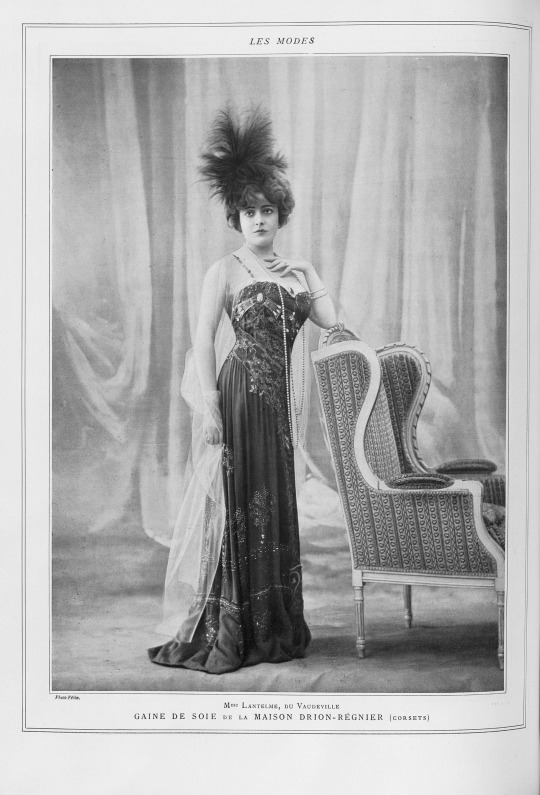

1910 (November) Femina cover Geneviève Lantelme wearing fur. From Wikimedia 1654X2068.
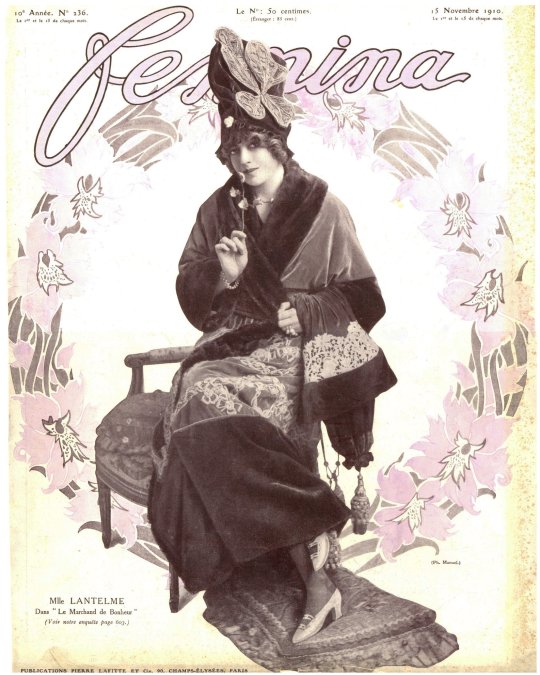
According to Wikipedia, "Joaquín Sorolla y Bastida (Valencian: Joaquim Sorolla i Bastida, 27 February 1863 – 10 August 1923)[a] was a Spanish Valencian painter. Sorolla excelled in the painting of portraits, landscapes and monumental works of social and historical themes. His most typical works are characterized by a dexterous representation of the people and landscape under the bright sunlight of Spain and sunlit water." He painted several portraits of his wife Clotilde and at least one of daughter Elena. He portrayed people on the beach in white or dressed in traditional black.
Left 1910 Clotilde con perro y gato by Joaquín Sorolla y Bastida (Museo Sorolla). From joaquin-sorolla.blogspot.com/2009/06/clotilde-sentada_04.html 1000X1600.
Right 1910 Clotilde con sombrero negro by Joaquín Sorolla y Bastida (Museo Sorolla - Madrid, Spain) photo - Ramón Muñoz. From the photostream of Ramón Muñoz on flickr; fixed spots & wrinkles w Pshop 1122X1732.

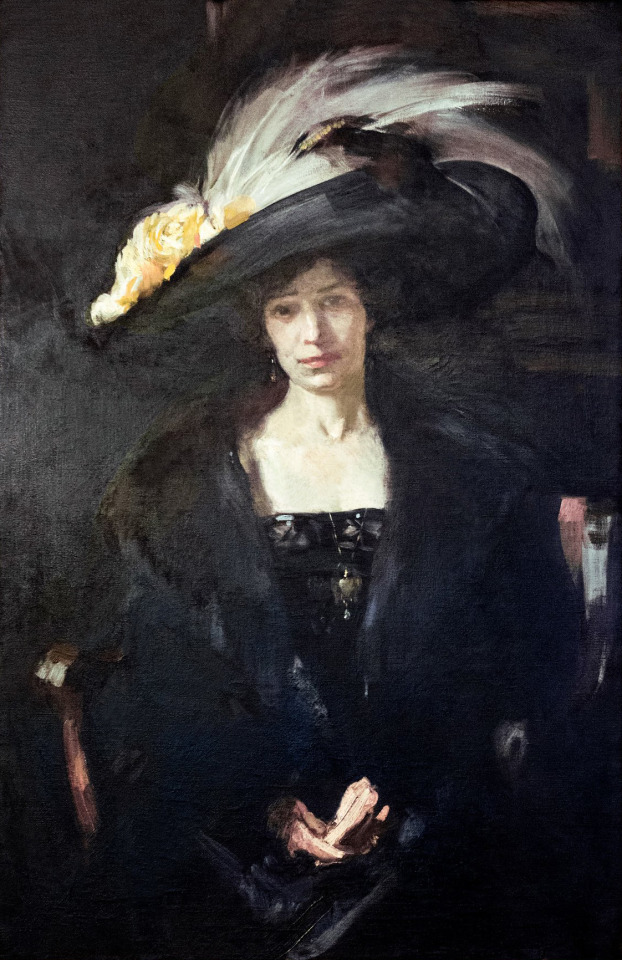
Left 1910 Clotilde con traje de noche by Joaquín Soroola y Bastida (Museo Sorolla - Madrid, Spain). From joaquin-sorolla.blogspot.com/2014/10/clotilde-con-traje-de-noche_5.html?m=1 1112X1600.
Right 1910 Clotilde sentada en un sofá by Joaquín Sorolla y Bastida (Museo Sorolla - Madrid, Spain). From Wikimedia; fixed spots w Pshop 1168X1932.


1910 Elena (Sorolla) con sombrero negro by Joaquín Sorolla y Bastida (private collection). From joaquin-sorolla.blogspot.com/2015/08/elena-con-sombrero.html?m=1 1198X1594.

Left 1910 Comtesse de la de la Maitrie in equestrian dress by Charles Albert Walhain (private collection) From liveinternet.ru/journalshowcomments.php?jpostid=319050317&journalid=4507805&go=prev&categ=0 950X1679.
Right 1910 Erzherzogin Maria Therese by H. C. Kosel. From eBay; removed mono-color tint 675X1061.


Left 1910 Lady Elsie Duveen, née Salamon by François Flameng (Ferens Art Gallery - Kingston upon Hull, East Riding of Yorkshire, UK). From artrenewal.org/artists/francois-flameng/158 2016X2610 @144 4.9Mp.
Right 1910 Madame Von Bodenhausen avec son enfant Luli by Theo van Rysselberghe (private collection). From the discontinued Athenaeum Web site 721X889.


#1910s fashion#1910 fashion#Belle Époque fashion#Edwardian fashion#Geneviève Lantelme#Jeanne Paquin#Auguste Bert#Le Théatre magazine#feather headdress#jeweled headdress#Félix#Jeanne Lanvin#veil#Femina magazine#Joaquín Sorolla y Bastida#Clotilde Sorolla#jacket#hair flowers#Elena Sorolla#Comtesse de la de la Maitrie#equestrian dress#Charles Albert Walhain#François Flameng#boots#vest#Erzherzogin Maria Therese#H. C. Kosel#Elsie Duveen#Madame Von Bodenhausen#Theo van Rysselberghe
8 notes
·
View notes
Text

A View of Galveston, the Birthplace of Juneteenth. This image of Galveston was taken by the Expedition 67 crew aboard the International Space Station as it orbited 224 miles above.
Though President Abraham Lincoln issued the Emancipation Proclamation on Jan. 1, 1863, many enslaved African Americans remained unaware of this executive order for an additional two and a half years. On June 19, 1865, Union troops read out General Order No. 3 at several locations throughout Galveston, Texas, announcing the end of legalized slavery and spreading the news of freedom.
That day of liberation became known as Juneteenth, the oldest known celebration commemorating the end of slavery in the United States. On June 17, 2021, President Joe Biden signed legislation to make Juneteenth a federal holiday. This image of Galveston was taken by the Expedition 67 crew aboard the International Space Station on June 20, 2022, as it orbited 224 miles above.
Photo Credit: NASA :: [Robert Scott Horton]
* * * * *
Notably, in the 1936-1938 federal Slave Narrative project, emancipated freeman and San Antonio-born Felix Hayward remarked: "There wasn't no reason to run up north… All we had to do was to walk, but walk south, and we'd be free as soon as we crossed the Rio Grande."
Felix Hayward quoted in an article by Isaiah Reynolds at Insider. In the mountains of Northern Mexico, descendants of formerly enslaved people have celebrated Juneteenth, or 'Día de los Negros,' for over a century
protoslacker
#Juneteenth#history#the Rio Grande#protoslacker#NASA#Scott Horton#Galveston Texas#slavery#emancepation#liberation#International Space Station
12 notes
·
View notes
Text
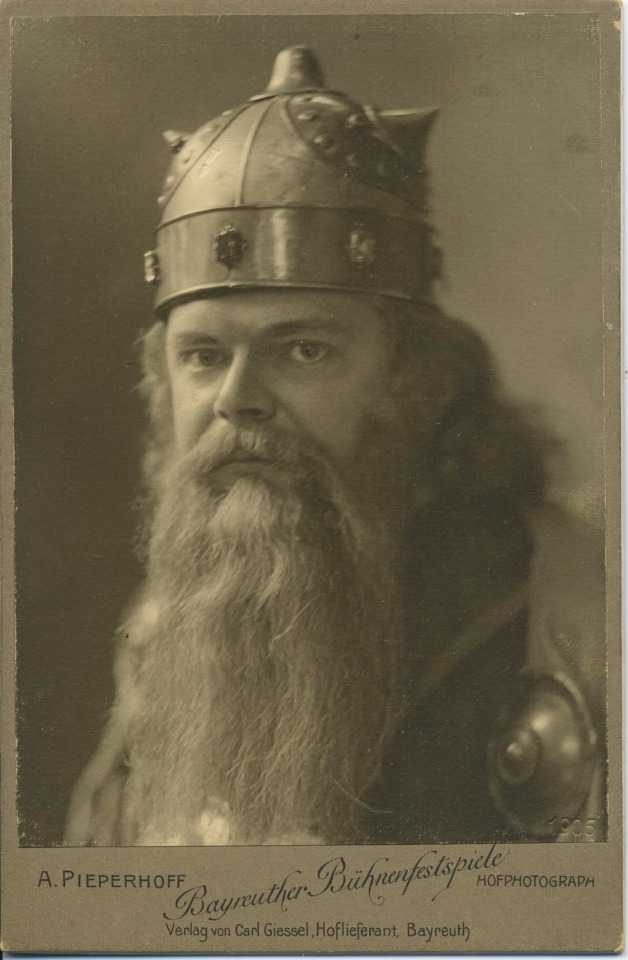

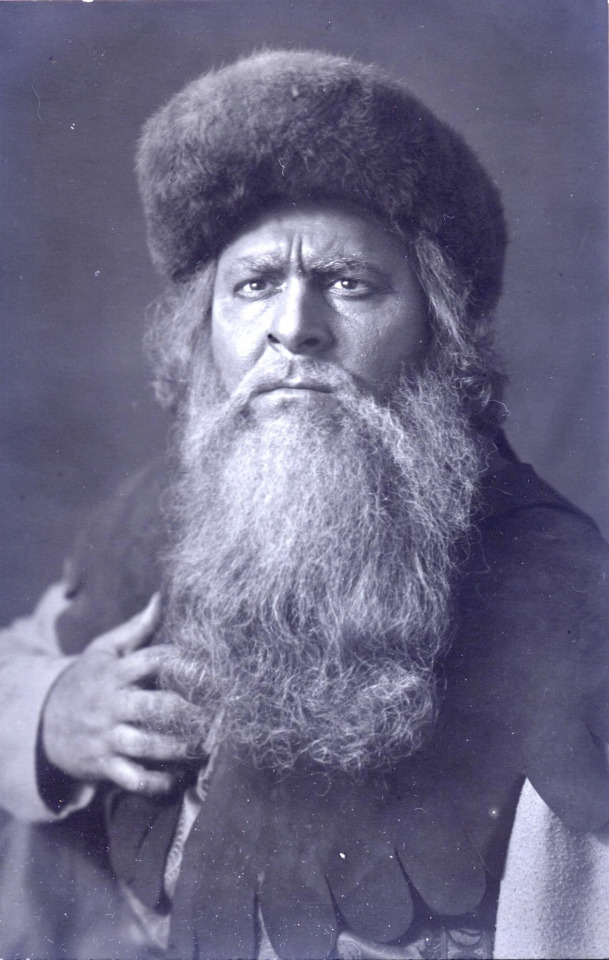


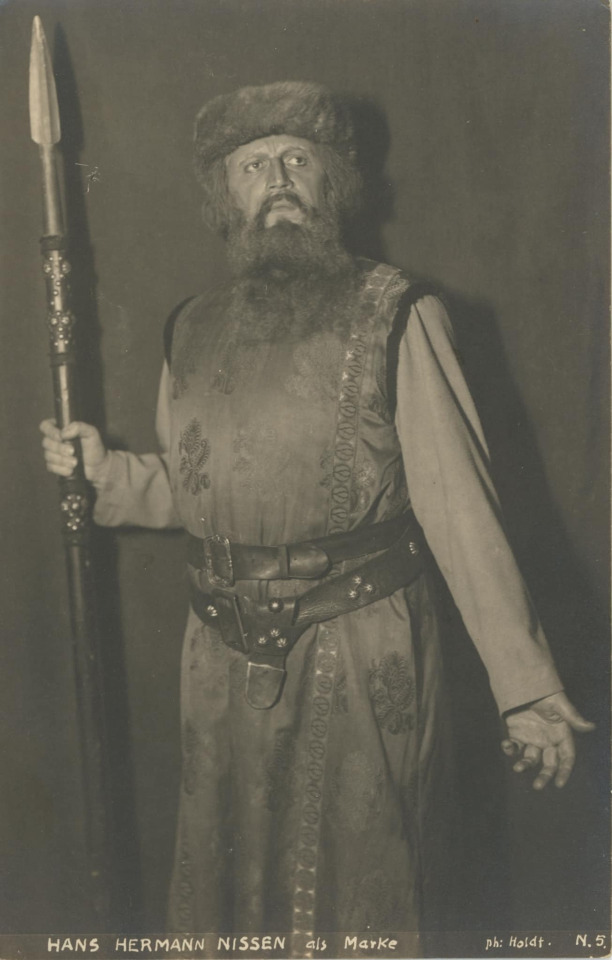
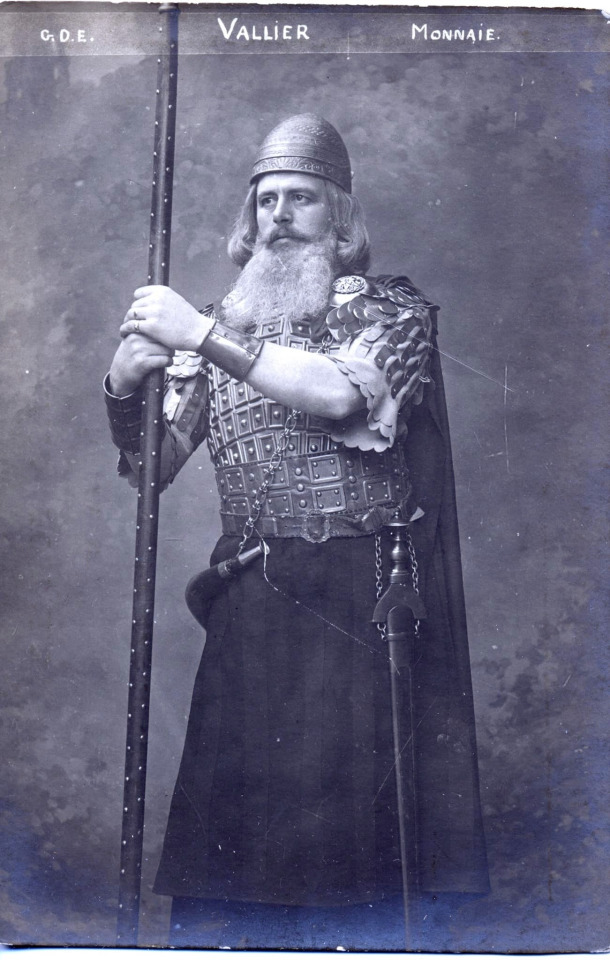

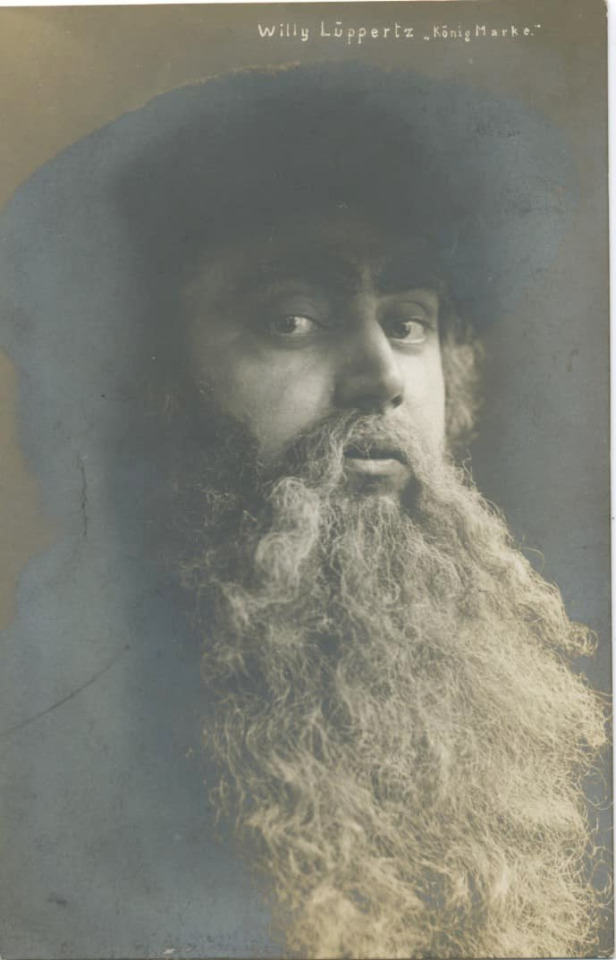

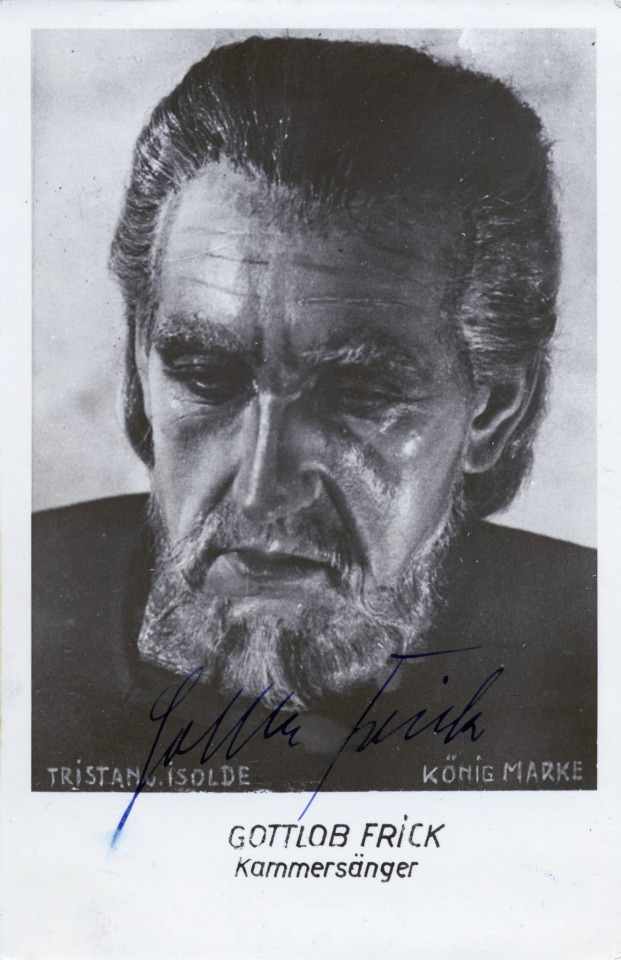
On June 10, 1865, the world premiere of "Tristan and Isolde" by R. Wagner took place in Munich.
„Tot denn alles! Alles tot!“
Here are some of the first basses to have sung the role of King Marke over the years and contributed to the success of this work through their dedication.
Felix von Kraus (October 3, 1870 - October 30, 1937), Austrian dramatic bass.
Paul Bender (28 July 1875 – 25 November 1947), German bass.
Max Gillmann (1874 - 1926), bass.
Theodor Lattermann (1880-1926), German bass-baritone.
Richard Mayr (November 18, 1877 in Henndorf am Wallersee - December 1, 1935 in Vienna), Austrian bass.
Hans Hermann Nissen (May 20, 1893, Danzig - March 28, 1980, Munich), German bass-baritone.
Jean Vallier (? 1863 - Paris 1952), French bass.
Joseph von Manowarda (3 July 1890 in Kraków – 24 December 1942 in Berlin), Austrian bass and Heldenbaritone.
Willy Lüpertz
Alexander Kipnis (February 13 [O.S. February 1] 1891 – May 14, 1978), Russian-born bass.
Gottlob Frick (28 July 1906 in Ölbronn-Dürrn – 18 August 1994 in Muhlacker), German bass.
#opera#classical music#music history#bel canto#composer#classical composer#aria#classical studies#classical#classical musician#classical musicians#classical history#opera history#musicians#musician#classical singing#classical singer#chest voice#maestro#tristan und isolde#tristan and isolde#richard wagner#wagner#historian of music#history#music#opera singer#singing#bass
12 notes
·
View notes
Text
Cold Blooded Killer? Or A Woman Defending her Love? The Case of Gaston Calmette & Henriette Cailleaux
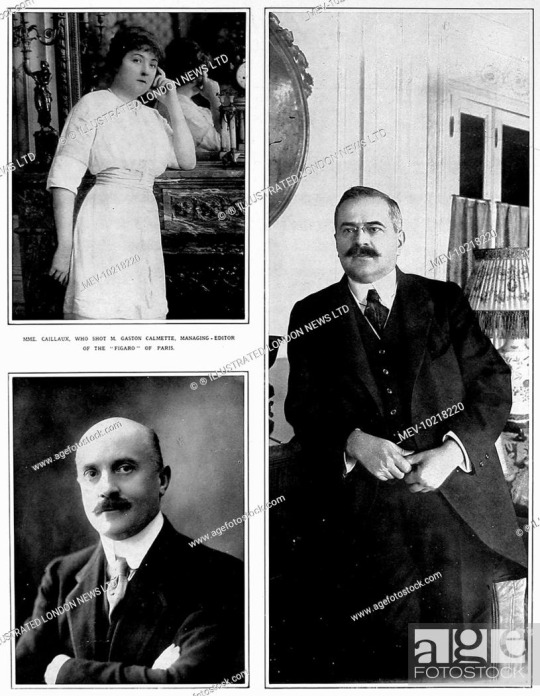
February 03, 2023
Gaston Clamette was born in Montpellier, France on July 30 1858 (some sources say June 30). He became a journalist and worked for the Le Figaro in 1884. By 1894, Gaston became the editor.
In January 1914, Gaston had began a campaign against Minister of Finance, Joseph Caillaux, who had brought forth progressive taxation and had made peace with Germany during the Second Moroccan Crisis in 1911. Joseph Caillaux was born on March 30, 1863, and was the leader of the French Radical Party.
It was a daily occurrence that the Le Figaro was publishing evidence that was damaging to Joseph Caillaux’s reputation, often proving that he had used his position to facilitate speculation on the Paris Bourse. Gaston believed Joseph was a threat to France and wanted his reputation destroyed.
Joseph of course had made enemies due to his pro-German policies but when he left office in 1912, he still was influential. Joseph was actually urged by colleagues to take legal action against Le Figaro but Joseph refused.
Henriette Raynouard was a French socialite who had married Joseph Caillaux in October 1911. She was born on December 5, 1874. It was known that Joseph had actually left his first wife for Henriette after he became prime minister and they had both begun this affair in 1907 when they were still married. Henriette had married a writer who was 12 years her senior at the age of 19, and had two children together. The two divorced in 1908 but Joseph had a more difficult time divorcing his wife.
However, things took a turn in 1914 when Gaston had published correspondence that was between Joseph and his first mistress, a woman named Berthe Gueydan. Joseph and Henriette’s private life was now in the public, and apparently there had been numerous love letters written back and forth between Joseph and Berthe. Many believed that Gaston was planning to publish those as well. Henriette did not want those love letters published as it made her public image look bad that her husband was already having an affair so early on in their marriage.
However, other sources claim that Gaston actually had love letters between Henriette and Joseph, that would prove he had had an affair with Henriette while he was still married to his first wife, which would also destroy their public image.
Henriette had had enough of Gaston and decided to visit his office on March 16, 1914. When she arrived she had a scarf that was concealing both of her hands. Henriette asked Gaston why he thought she had come to see him, and when he responded he had no idea, Henriette took a Browning automatic out of the scarf and shot Gaston six times in the stomach.
Gaston was hit four times and was critically wounded. He did not die at the scene, but rather 6 hours later.
Police immediately surrounded Henriette as she yelled, “Do not touch me! I am a lady!” Henriette did not try to escape, she simply asked for her own chauffeur to drive her to the police station instead of being transported in a police van. Henriette was charged upon arriving at the police station.
Joseph had to resign from his post the following day, on March 17, 1914.
Henriette’s trial began on July 20, 1914 and was extremely public in the French news. Due to political views, the public was split in half. The left believed that Gaston’s goal to ruin her husband’s reputation drove her insane, while the right side believed she was a cold blooded killer, perhaps evening murdering Gaston at her husbands request.
There were many people with power in society attending the trial. Henriette played on the stereotype that women are very emotional, and that her actions were due to an emotional state. The all male jury took less than an hour to reach a verdict of not guilty. Henriette was acquitted on July 28, 1914.
Henriette went on to study art and write a book before she died on January 29, 1943 at the age of 68. Joseph died on November 22, 1944, at the age of 81.
8 notes
·
View notes
Text





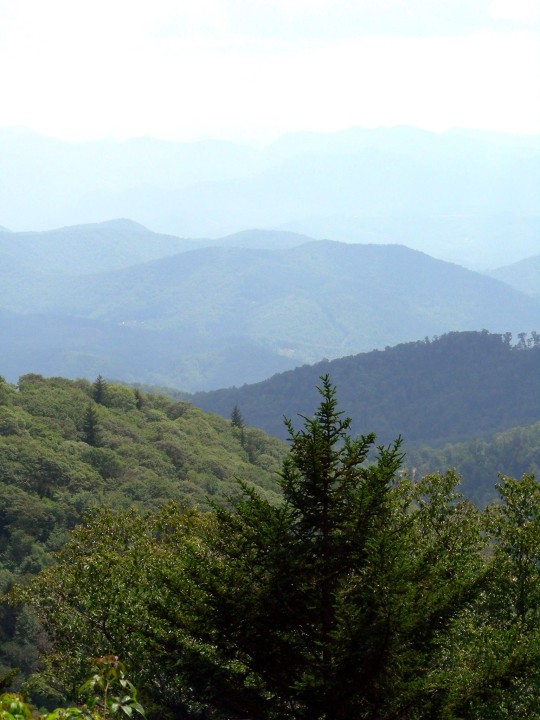


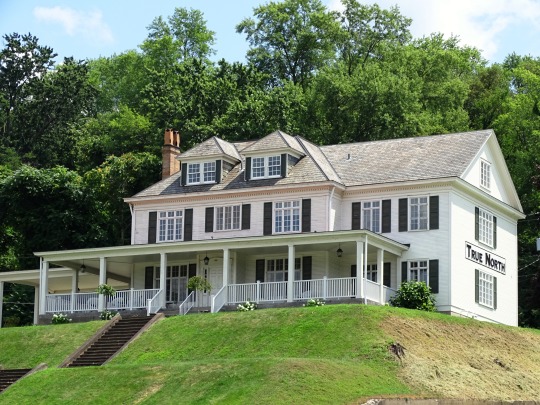




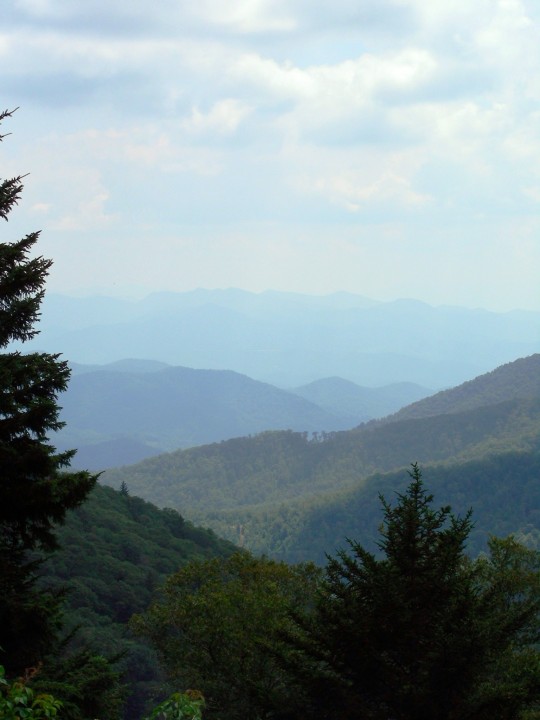


West Virginia was admitted as the 35th U.S. state on June 20, 1863.
#World's Largest Teapot#Chester#Appalachian Mountains#C.A. Smith Mansion#architecture#original photography#vacation#tourist attraction#landmark#travel#cityscape#landscape#roadside attraction#Blue Ridge Mountains#2009#forest#woods#countryside#160th anniversary#US history#US Civil War#35th US State#20 June 1863#American Civil War
5 notes
·
View notes
Text
Remarkable Writers In The Different Periods
Period of Activism
1. Ponciano B. Peralta Pineda
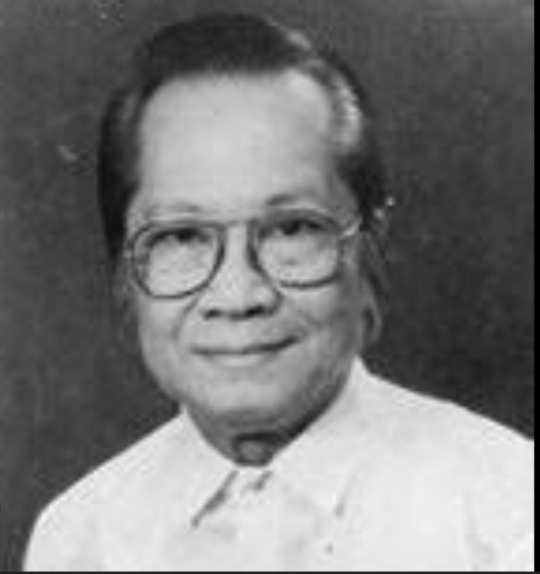
Filipino author, educator, linguist, and attorney Ponciano B. Peralta Pineda. Due to his support for the creation of a commission under Section 9 of the Philippine Constitution, Ponciano Pineda is regarded as the "Father of the Commission on Filipino Language"[1].
From 1971 to 1999, he served as the director of the Commission on the Filipino Language, formerly known as the Surian ng Wikang Pambansa (Filipino: Komisyon sa Wikang Filipino). Pineda began sociolinguistic studies to broaden the Filipino language under his direction.
reference:https://en.wikipedia.org/wiki/Ponciano_B._P._Pineda
2. Jose "Pete" Lacaba

Jose "Pete" Lacaba - A poet, journalist, and screenwriter, Lacaba's works often dealt with the themes of social injustice, oppression, and resistance. He is the author of "Days of Disquiet, Nights of Rage" and "Mga Kagila-gilalas na Pakikipagsapalaran sa mga Himala."
reference: https://en.m.wikipedia.org/wiki/Pete_Lacaba
Post Edsa Writer
1. Jose Dalisay Jr.

Jose Dalisay Jr. - Also known by his pen name, Butch Dalisay, he is a multi-awarded writer and essayist who has authored numerous books and articles, including "Killing Time in a Warm Place" and "Soledad's Sister."
reference: https://en.m.wikipedia.org/wiki/Jose_Dalisay_Jr.
2.Nick Joaquin
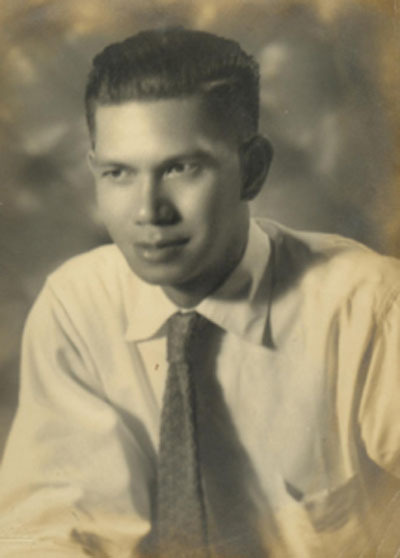
Nick Joaquin - A well-known writer and historian, Joaquin's works often explore the complexities of Philippine history and culture. Some of his notable works include "The Woman Who Had Two Navels" and "Cave and Shadows."
reference:https://en.m.wikipedia.org/wiki/Nick_Joaquin
Pre- Colonial Period
1. José Protasio Rizal Mercado y Alonso Realonda
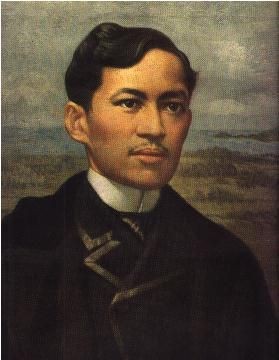
was a Filipino nationalist, writer, and polymath active at the conclusion of the Spanish colonial period of the Philippines (Spanish: [xose rizal, -al], Tagalog: [hose isal]; June 19, 1861 - December 30, 1896). He is regarded as the national hero (pambansang bayani) of the Philippines.[8][9] A writer and prominent figure in the Filipino Propaganda Movement, which promoted political reforms for the colony under Spanish rule, Rizal was an ophthalmologist by trade.
reference: https://en.m.wikipedia.org/wiki/Jos%C3%A9_Rizal
2. Marcelo H. Del Pilar

Marcelo Hilario del Pilar y Gatmaitán[2] (Spanish: [mae.lo i.la.jo el pila]; Tagalog: [mase.lo la.jo del pla]; August 30, 1850 – July 4, 1896), also known as Marcelo H. del Pilar, a Filipino author, lawyer, journalist, and freemason also known by his pen name Pláridel,[3][4] was also a writer. Del Pilar, along with Graciano López Jaena and José Rizal, rose to prominence as the head of the Reform Movement in Spain. [5]
reference: https://en.m.wikipedia.org/wiki/Marcelo_H._del_Pilar
Period Of Enlightenment
1. Antonio Luna
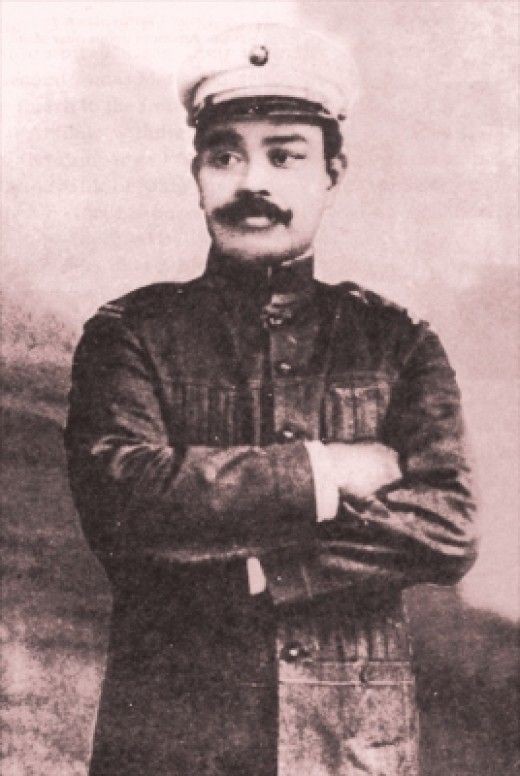
Before being assassinated on June 5, 1899, at the age of 32, Antonio Narciso Luna de San Pedro y Novicio Ancheta (Spanish: [antonjo luna]; October 29, 1866 - June 5, 1899) was a Filipino army commander who participated in the Philippine-American War.
reference: https://en.m.wikipedia.org/wiki/Antonio_Luna
2. Mariano Ponce y Collantes

Mariano Ponce y Collantes was a Filipino physician, author, and prominent propagandist who lived from March 22, 1863, until May 23, 1918. He helped form La Solidaridad and Asociación Hispano-Filipina in Spain. Efemerides Filipinas, a column on Philippine historical events that published in La Oceania Espaola (1892-1893) and El Ideal (1911–1912), was one of his notable works. In 1917, he published Ang Wika at Lahi, a discourse on the value of a national tongue. From 1909 to 1912, he also represented Bulacan in the Philippine Assembly.
reference:https://en.m.wikipedia.org/wiki/Mariano_Ponce
American Regime
1. Carlos P. Romulo

John Carlos Pea Romulo Jr. Filipino politician, statesman, soldier, writer, and author QSC GCS CLH NA GCrM GCrGH KGCR (January 14, 1898 – December 15, 1985). At the ages of 16, 20, and 32, he was a newspaper editor, a reporter, and a publisher. He co-founded the Boy Scouts of the Philippines, served as a general in both the US and Philippine armies, served as president of a university, and presided over the UN General Assembly.
reference:https://en.m.wikipedia.org/wiki/Carlos_P._Romulo
2. Paz Marquez Benitez

Paz Márquez-Bentez was a Filipino short story writer, educator, and editor (March 3, 1894 – November 10, 1983). Her career as a woman educator and writing contributions are seen as important steps within the advancement of women in professional careers as well as in the development of Philippine literature.
reference: https://en.m.wikipedia.org/wiki/Paz_M%C3%A1rquez-Ben%C3%ADtez
Photo Credits:
1st Img:https://www.google.com/imgres?imgurl=https%3A%2F%2Ftse1.mm.bing.net%2Fth%3Fq%3DPonciano%2BPineda&tbnid=WZC1z6oKPrB55M&vet=1&imgrefurl=https%3A%2F%2Fphschooli.github.io%2Fponciano-pineda.html&docid=63bXGiguB_cStM&w=150&h=154&itg=1&hl=en-US&source=sh%2Fx%2Fim
2nd Img: https://images.app.goo.gl/hTeHAivnMqeT748R7
3rd Img: https://www.google.com/imgres?imgurl=https%3A%2F%2F0.academia-photos.com%2F25515653%2F6973447%2F7863375%2Fs200_jose.dalisay.jpg&tbnid=NBSPTbqqnb2dTM&vet=1&imgrefurl=https%3A%2F%2Fup-diliman.academia.edu%2FJoseDalisay%2FCurriculumVitae&docid=nlqpiPJ0mbNdFM&w=200&h=200&hl=en-US&source=sh%2Fx%2Fim
4th Img: https://www.google.com/imgres?imgurl=https%3A%2F%2Fimages.gr-assets.com%2Fauthors%2F1271904633p8%2F74757.jpg&tbnid=nbm2NL2FMdmm0M&vet=1&imgrefurl=https%3A%2F%2Fwww.goodreads.com%2Fauthor%2Fshow%2F74757.Nick_Joaqu_n&docid=4DO2yFYXFPsVFM&w=400&h=558&hl=en-US&source=sh%2Fx%2Fim
5th Img:
https://pin.it/51o5z7r
6th Img:
https://pin.it/4iGGdMy
7th Img:
https://www.google.com/search?gs_ssp=eJzj4tTP1TdIzzA2NjVg9OLNTSzKTMzLVyjIz0tOBQBjjwgd&q=mariano+ponce&oq=Ma&aqs=chrome.3.69i60l3j46i39i650j69i60j69i57j69i59j69i60j46i67i650j0i67i433i650.1648j0j4&client=ms-android-transsion&sourceid=chrome-mobile&ie=UTF-8#imgrc=6iTmTDQzbONVuM&lnspr=W251bGwsbnVsbCxudWxsLG51bGwsbnVsbCxudWxsLG51bGwsbnVsbCxudWxsLG51bGwsbnVsbCxudWxsLG51bGwsbnVsbCxudWxsLG51bGxd
8th Img:
https://pin.it/1lXfM0v
9th Img:
https://www.google.com/imgres?imgurl=https%3A%2F%2Fcdn.tatlerasia.com%2Ftatlerasia%2Fi%2F2023%2F03%2F03132943-paz-f_cover_1600x900.jpg&tbnid=EcJM6sXtpjA_9M&vet=1&imgrefurl=https%3A%2F%2Fwww.tatlerasia.com%2Flifestyle%2Farts%2Fpaz-marquez-benitez&docid=dYhHL_yuRQCKCM&w=1600&h=900&source=sh%2Fx%2Fim
10th Img:
https://www.google.com/search?client=ms-android-transsion&sxsrf=APwXEdeh3fEJ-aNLwLWVyG2H1Gu4KjrUOQ:1683042906425&q=julian+cruz+balmaceda&tbm=isch&sa=X&ved=2ahUKEwjV09C0_9b-AhVDEnAKHWLvAV8Q0pQJegQIDBAB&biw=360&bih=728&dpr=3#imgrc=rp-VeXX39fK64M&lnspr=W251bGwsbnVsbCxudWxsLG51bGwsbnVsbCxudWxsLG51bGwsbnVsbCxudWxsLG51bGwsbnVsbCxudWxsLG51bGwsbnVsbCxudWxsLG51bGxd
4 notes
·
View notes
Photo
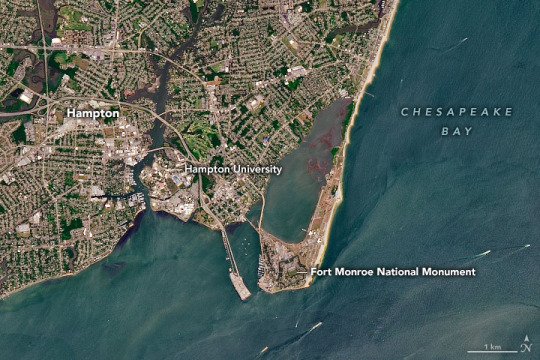
Freedom’s Fortress About 35 million years ago, an asteroid or comet smashed into the continental shelf near what is now the mouth of Chesapeake Bay. Among the areas in the blast zone was Old Point Comfort, the southernmost spit of land on the Virginia Peninsula. That same piece of land was later the site of a historical collision that reverberates to this day. In August 1619, two British-owned privateer ships—the White Lion and the Treasurer—came ashore at Old Point Comfort and delivered 20 to 30 captive Africans in exchange for food. Historians point to that moment as the first instance of slave trading in a British colony in mainland North America. The group of captives, probably from the Kingdom of Ndongo in what is now Angola, were among the hundreds of thousands of Africans who were eventually brought to America and enslaved. The Operational Land Imager (OLI) on Landsat 8 acquired this natural-color image of Old Point Comfort on June 10, 2022. When the first landing of Africans occurred in Virginia, the peninsula was home to the small, wooden Fort Algernourne. Fort Monroe, a larger stone fortress built during the War of 1812, now occupies the spot. Parts of the moat around the hexagonal fort are visible in the Landsat image, as well as several of the six bastions. Although Virginia was part of the Confederate States of America, Fort Monroe remained under Union control for the entirety of the American Civil War. It became a symbol of freedom and hope for many Americans after Union Major General Benjamin Butler rejected the Fugitive Slave Act, a law that required enslaved people to be returned to their enslavers even if they were living in a free state. This led to hundreds of escaped slaves claiming asylum at the fort. During the course of the war, thousands of people also flocked to a nearby “contraband camp” in Hampton, Virginia, becoming one of the first self-contained Black communities in the United States. In the fall of 1861, Mary Smith Peake, began teaching formerly enslaved people to read and write under the limbs of an oak tree in the community of Phoebus near Fort Monroe. This same oak tree was the site of the first southern reading of the Emancipation Proclamation in 1863. Five years later, Hampton University was established at the site of Peake’s outdoor classroom. The Emancipation Oak still grows on the grounds of the university. “Hampton is where American slavery began. But, in a twist of fate, Hampton is also the place where slavery began to end,” the Hampton city website notes. “The legacy of 1619 defines our nation’s journey toward freedom.” Historians and planners in Hampton now face a different sort of challenge as they try to preserve this piece of history. The rate of sea level rise has accelerated to roughly one inch every four years due to ongoing subsidence of the land, warming waters, and other factors related to climate change. Sea level rise projections from the Interagency Sea Level Rise Scenario Tool (published by NASA’s Sea Level Change Team) indicate that Sewell’s Point in Hampton Roads could experience between 0.69 and 2.2 meters (2 and 7 feet) of sea level rise by 2100. NASA Earth Observatory image by Joshua Stevens, using Landsat data from the U.S. Geological Survey. Story by Adam Voiland.
7 notes
·
View notes